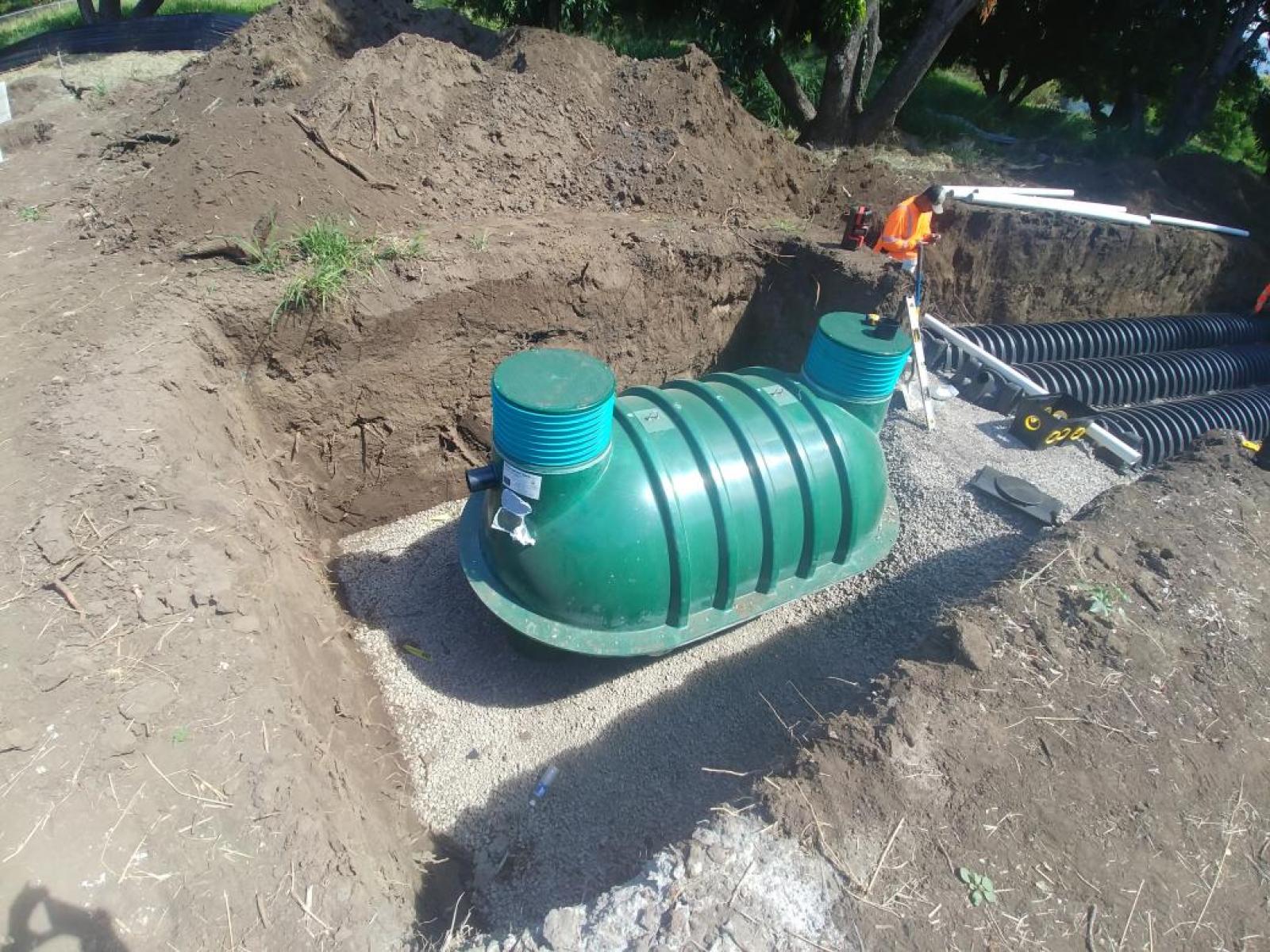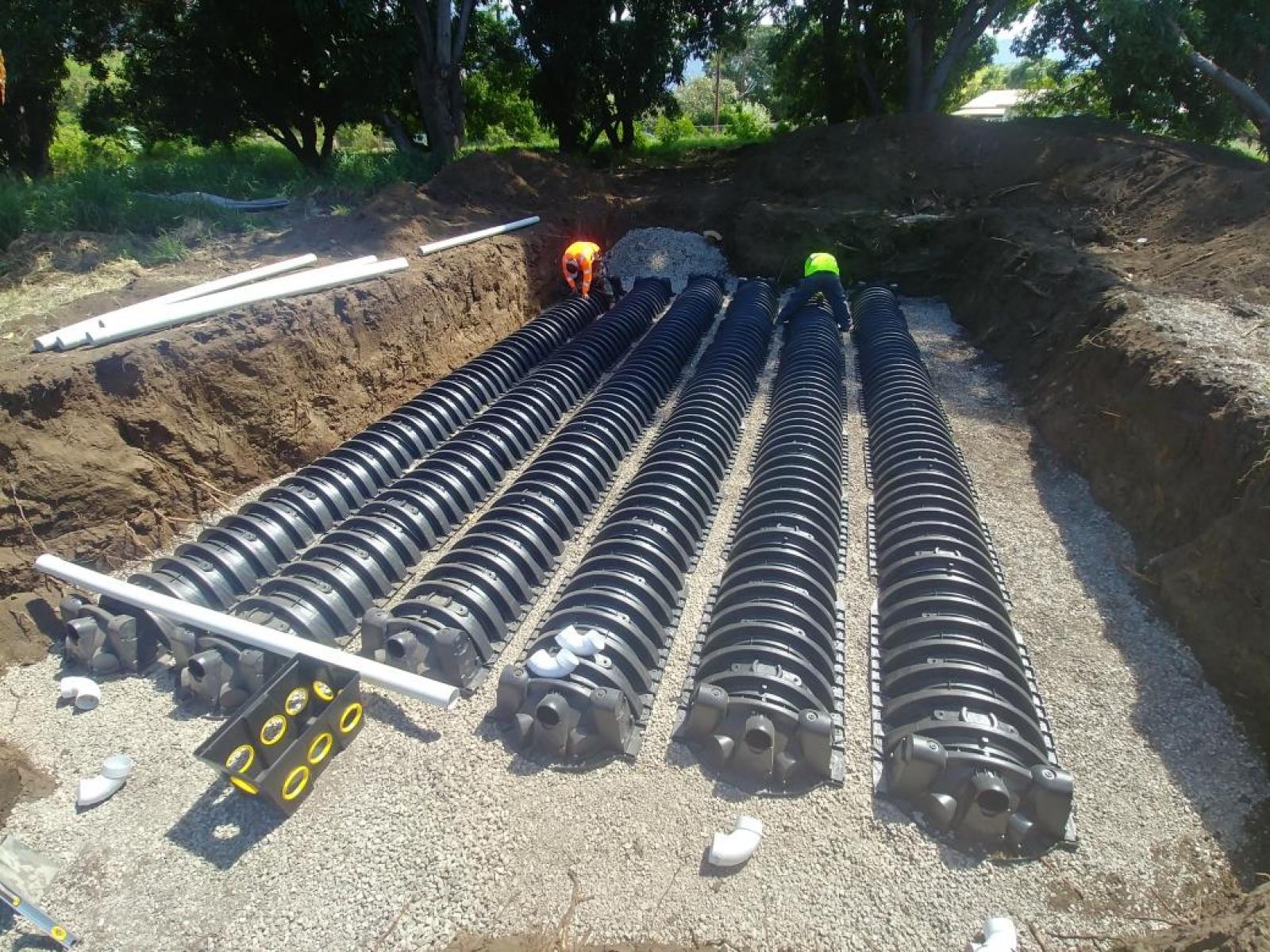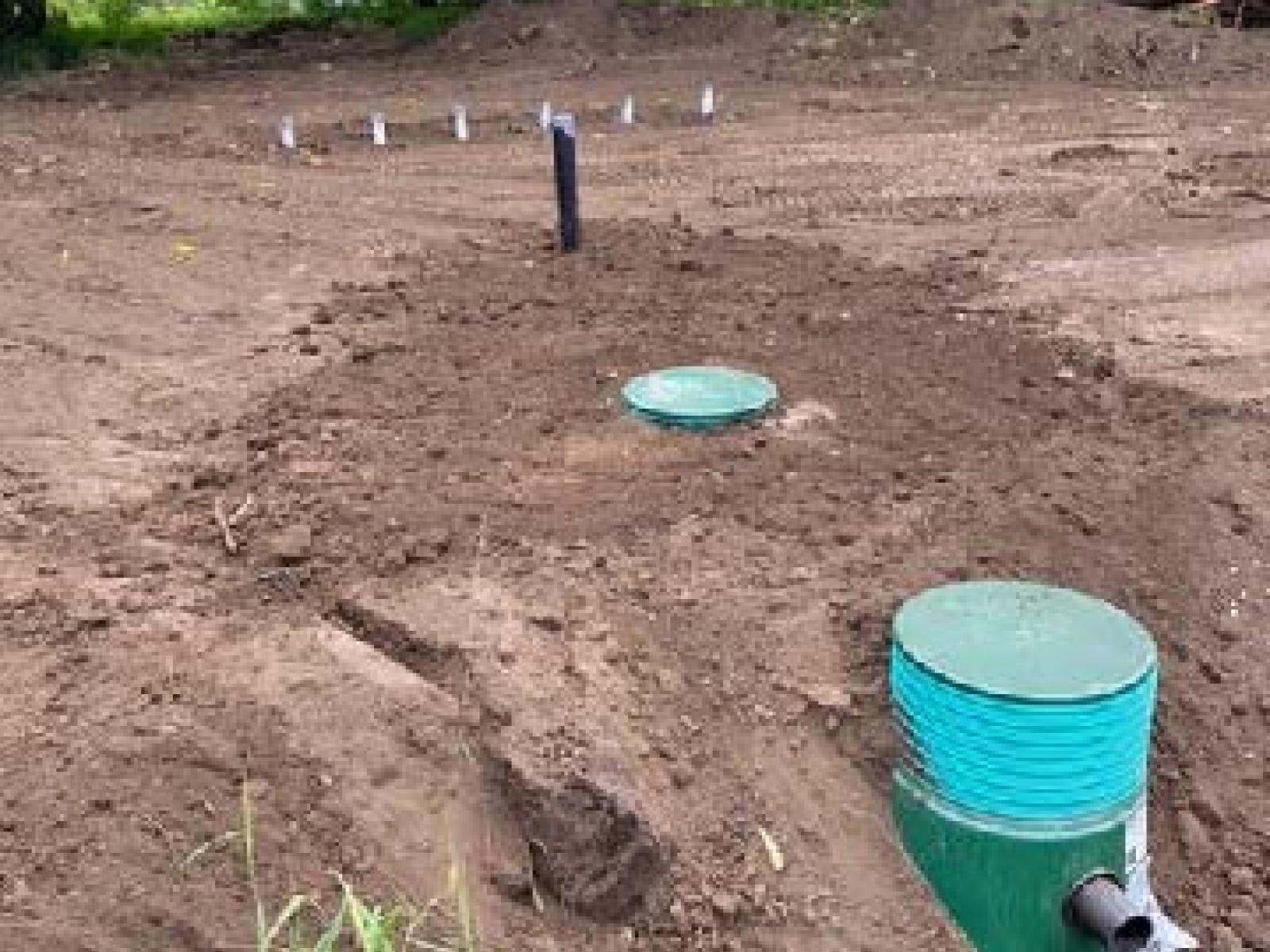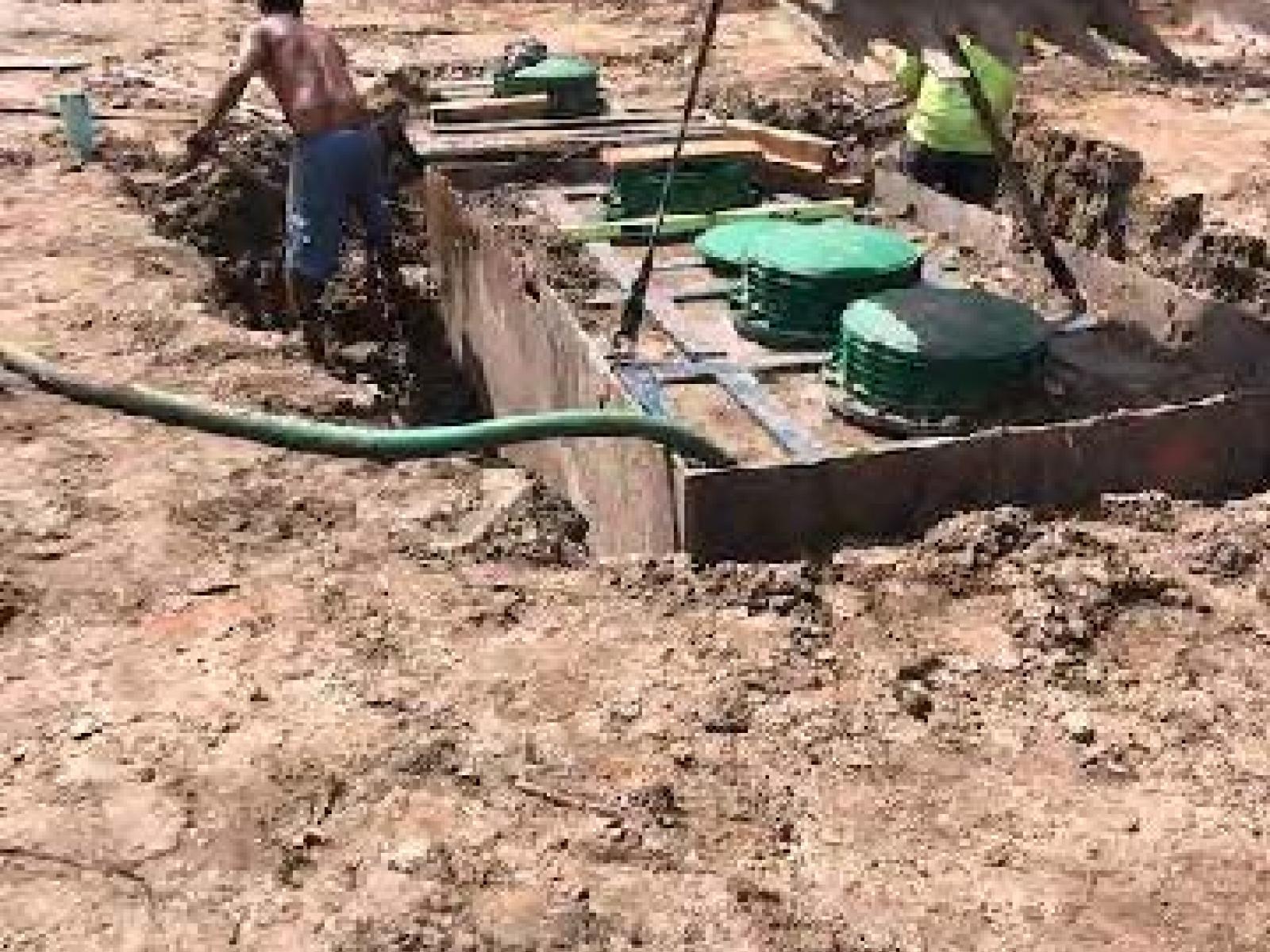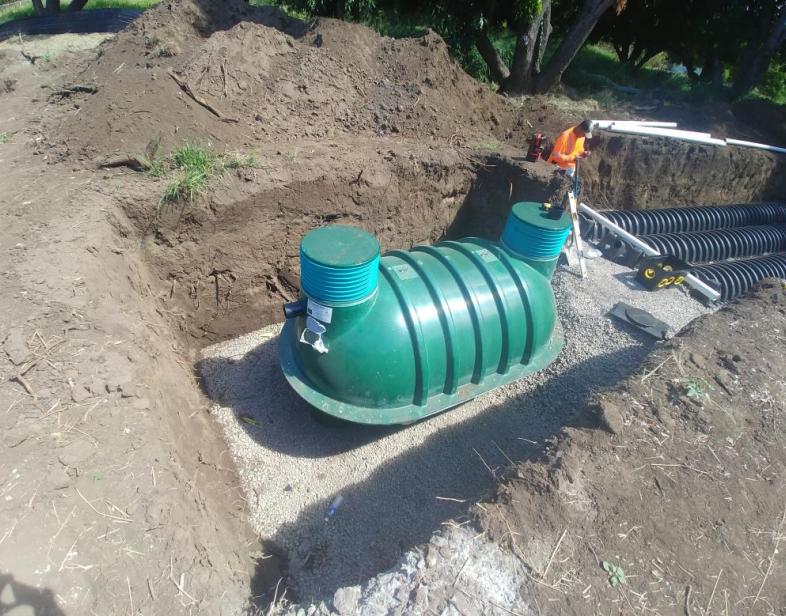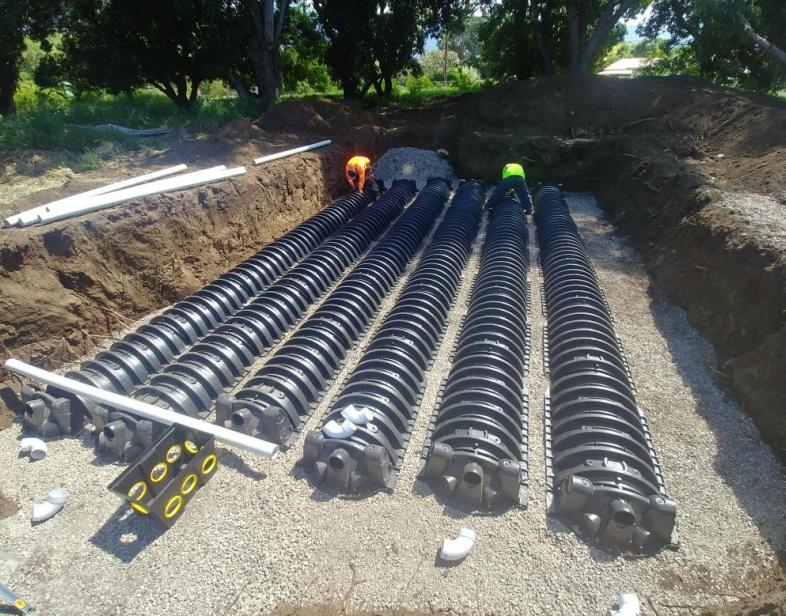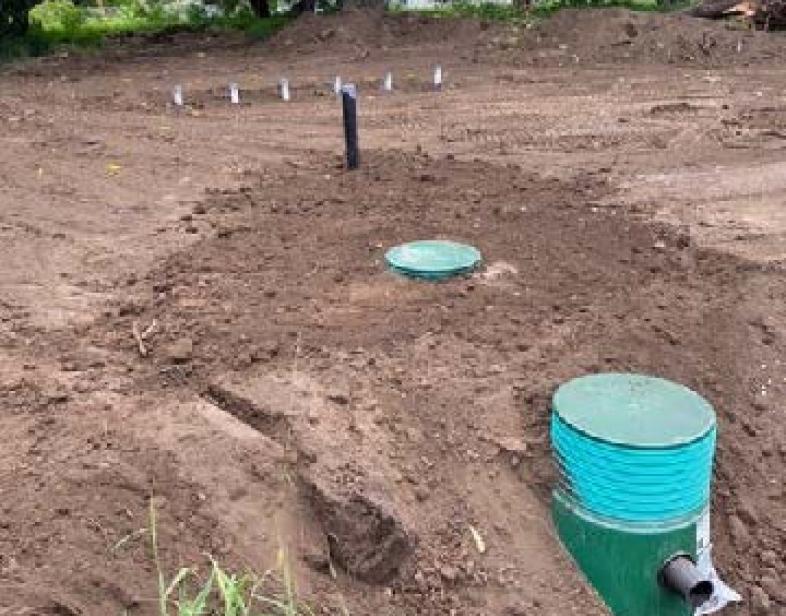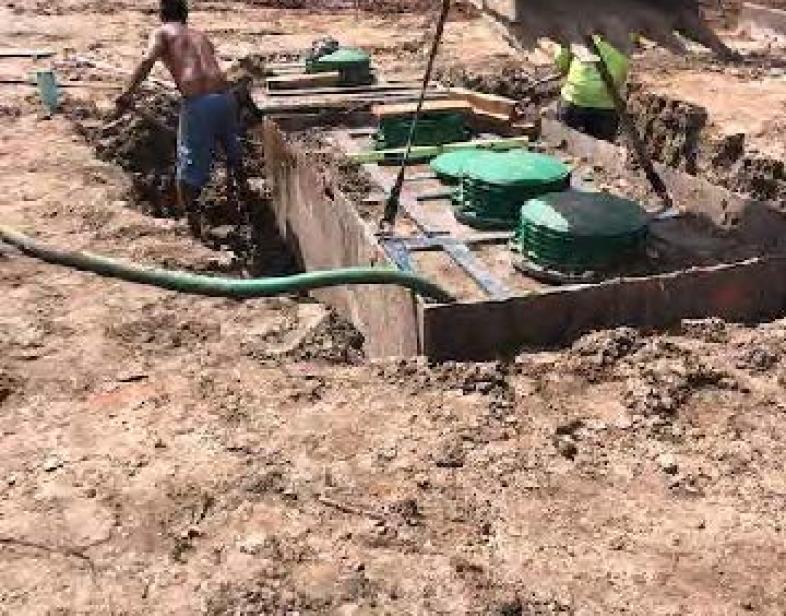An Overview Of Our Solution
The Work-4-Water Initiative (W4W) aims to help Hawaii deal with the major water pollution issues by proposing unique and necessary projects to support a statewide resilient economy and community/ecosystem recovery. Hawaii has been struggling for years to find solutions to its numerous wastewater issues. W4W provides the state an immediate opportunity to jump-start the mandated replacement of cesspools, while simultaneously training and employing a specialized, non-tourism based workforce. This novel approach combines academia, government, non-profit, and citizen stakeholders to approach wastewater pollution from the bottom-up, carrying the diverse values and needs of the community throughout the solution. By using an adaptive management framework, our program can respond to changing values, technologies, and societal/environmental needs.
- Population Impacted: Directly impacted: 88,000 to 120,000. Indirectly impacted: 1.46 million residents & 10.4 million tourists/year.
- Continent: North America
Prénom
Nom de famille
Type d'organisation
Courriel
Analyse du contexte
There are approximately 88,000+ cesspools spread across the main Hawaiian Islands. Cesspools are porous, non-reinforced seepage pits which are vulnerable to spillage in severe rainstorms, flooding events, and earthquakes. Because cesspools lack adequate treatment of human waste, they harm public health and the surrounding environment by releasing dangerous pathogens and nutrients. Each day, Hawaii’s cesspools discharge nearly 53 million gallons of sewage into the ground. Eventually, polluted groundwater makes its way to the aquifer, impacting drinking water, and to the ocean harming coral reefs. Hawaii’s freshwater resources are finite, and coral reefs provide Hawaii and the world with enormous benefits such as medicines, tourism, food, and protection from storms. There is an urgent need to stem the flow of sewage into the ground from cesspools. However, replacing cesspools on a diverse and geographically isolated island chain is expensive, multifaceted, and logistically challenging.
Décrivez la solution technique que vous voudriez voir le public cible adopter.
Many citizens do not think about where their wastewater goes after they flush. But, Work-4-Water (W4W) believes it’s vital to understand how our actions impact the environment. Being an island nation requires us to scrutinize practices (even more than the mainland) that impact water resources and interconnected systems. I.e., what we flush, impacts our drinking water and surfing spots. The solution to sewage pollution in Hawaii is simple: eliminate cesspools. We aim to help homeowners replace cesspools with more advanced onsite wastewater treatment systems available today, such as aerobic treatment units, incineration toilets, or hook up to available municipal sewage systems. We don’t want to reinvent the wheel, just nudge people in the right direction! These systems can dramatically reduce the number of nutrients and pathogens which can enter the ground, surface, and ocean waters, ultimately protecting human and environmental health.
Décrivez votre intervention comportementale.
Motivating homeowners to make a significant monetary investment for the environment is a long-term (20-30 years) proposition. It requires plans to incorporate adaptive management procedures to assess changes in attitudes and technology. The first catalytic action taken to motivate the replacement of cesspools statewide legislation that banned new construction and mandated their replacement by 2050.
Another method to change behavior is through career choices, W4W aims to train the next generation of onsite wastewater workers who will understand the impacts of wastewater on the environment. Those working in this field can be representatives of environmental restoration, and ambassadors of cesspool replacement all while stimulating the economy through well-paying jobs independent of the traditional tourism industry.
Outreach efforts and tested and targeted messaging will focus on public health risk, sustainability, and property value/resale potential to motivate homeowners to replace their cesspools. One of the main goals of our message is to help people understand that you don’t have to own a cesspool to be impacted by pollution.
Additionally, we are breaking down barriers to expedite cesspool replacement by fast-tracking permitting and reducing costs. In the end, we hope to create a community that understands that their actions impact the environment, which improves community health and wellbeing.
Leviers comportementaux utilisés
Au besoin, veuillez expliquer comment vous avez utilisé le ou les leviers avec plus de détails.
Choice Architecture (CI) and Information (IN) are used by simplifying the decision-making around cesspool conversion by shifting from an uninformed, "wait until forced to upgrade cesspool and then choose cheapest option" to an informed, "make a plan to upgrade cesspool on own schedule" decision.
Emotional Appeals (EA) and IN are used by expressing the following items that cesspools pose hazards to: health of the next generation, reef health, and food sustainability through fishing/food security.
Material Incentives and IN are used by stressing the dependence of Hawaii's economy on tourism, and the dependence of tourism on a clean ocean.
MI are also used by underlining the increase in property resale value that is created through cesspool upgrades.
IN is given by means of the Voice of the Sea educational video series.
Rules and Regulations (RR) were used when legislature mandated the ban of all cesspools by 2050 and the creation of the Cesspool Conversion Working Group.
Décrivez votre mise en œuvre.
1. Improve water quality and reduce the public and environmental health risks associated with sewage pollution from the state’s estimated 88,000 cesspools;
2. Jump-start Hawaii’s economy by creating shovel-ready projects to convert 400 cesspools in the most at-risk areas on Oahu, Maui, Kauai, and Hawaii Island;
3. Develop training courses in wastewater management to meet workforce demand while creating long-term, well-paid jobs that are not dependent on tourism;
4. Create a proof-of-concept model and blueprint for Hawaii to fulfill its mandate under Act 125 to more quickly convert the remaining cesspools by 2050 and;
5. Transform the social, economic, and public health costs of the COVID-19 pandemic into an opportunity to create needed jobs, stimulate the economy, protect water quality and enhance Hawai’i’s natural environment for locals and visitors alike.
To ensure the solution was adopted and promoted a change in behavior, the Dpt of Health can count how many cesspools were converted, the water can be tested, and the usage of community college training and certifications can be evaluated.
Enabling conditions are scientific evidence of harmful effects of wastewater from cesspools, joblessness based on tourism-dependent workforce, and the 2050 cesspool ban.
The challenges standing in the way of the elimination of all cesspools have been identified and range across the financial, political, educational, social, and technological sectors. This means that in order to overcome these challenges, a multi-faceted approach is needed. Financial resources for cesspool owners need to be identified. Bills need to be introduced to facilitate cesspool upgrades. Communities need to be energized to tackle the problem. The public needs to be educated about the problem and possible solutions. Innovative technologies need to be introduced and spread across the islands. A workforce needs to be created.
Hawaii's remote location and the high cost of living are further obstacle
Décrivez le leadership de votre solution. Qui dirige la mise en œuvre?
It would not be accurate to name one single entity that leads this effort. There are many diverse stakeholders and partners with equal share responsibility in this effort. Given the large spectrum of obstacles, we believe the highly decentralized nature of the solution approach is a strength, allowing for more voices being heard, and therefore more opportunity for innovation and community engagement.
One of the main groups to spearhead efforts is the state's Cesspool Conversion Working Group (CCWG), which operates on a State and County government level while the W4W Hui (group) combines different levels including institutions of higher education and non-profit organizations. Both the CCWG and the W4W Hui include men and women, of different ethnicities, different career backgrounds, researchers and applied practitioners, different levels of education, and varying socioeconomic levels.
Principaux intervenants et partenaires du programme
The W4W Hui is creating a multi-faceted approach to jump-starting the cesspool conversion and workforce development effort in Hawaii. This Hui includes the University of Hawaii (UH) including the UH Community Colleges, Sea Grant, UH Water Resources Research Center, the non-profit organization WAI, and the State of Hawaii Department of Health.
The following key partners and stakeholders are engaged indirectly:
The Surfrider Foundation is a non-profit organization that has been advocating for the upgrade of cesspools across Hawaii for years. The same is true for a number of local watershed huis.
A number of small local engineering companies across the state drive a large portion of their annual revenue from cesspool upgrades. The same is true for many local small contracting companies.
The local manufacturing and vending companies make their living by selling equipment used for cesspool upgrades.
It is possible that one or more community development financial institutions will provide loans to individual homeowners to upgrade their cesspools in the future, allowing more control and better-targeted solutions to solve community challenges.
Qui a adopté le(s) comportement(s) souhaité(s) et dans quelle mesure?
As of 2020, only a couple hundred cesspools are being upgraded per year. Though the legislative conversion date of 2050 affords flexibility among homeowners and regulators, we recognize that about 3,000 homeowners must convert/year. Our program seeks to offer incentives and motivate homeowners to convert earlier. We also realize that other factors may be inhibiting potential conversions due to the lack of available contractors and onsite wastewater maintenance professionals. Thus, our program provides the space for needed educational training and market expansion. In order to better understand barriers to conversion, we will administer surveys of cesspool owners and catalog the data for future use. This information will inform regulators and planners providing valuable information and benchmarks to assess progress.
Quel a été votre impact sur la pollution de l'eau?
The conversion of cesspool systems positively impacts water quality by eliminating a non-point source of nitrogen, phosphorus, pharmaceuticals, and pathogens (viruses and bacteria) into groundwater and nearshore environment. Because of Hawaii’s porous basalt and karst substrate, dye tracer studies have shown that wastewater from a cesspool can reach the ocean in as little as several hours, lacking sufficient time to slowly percolate through the soil and filter harmful contaminants. Our program also seeks to adjust how onsite systems are permitted, by using sea-level rise data to avoid at-risk areas. The degree of impact to the environment will be measured in the future by the number of cesspool replacements, Delta N15 (isotope of nitrogen) values (a wastewater indicator), coral reef health, and dye tracer studies offshore of conversion sites.
Quel a été l'impact de votre solution sur les problèmes d'équité?
Cesspools are utilized by community members across the social strata, from ocean-front mansions to humble working-class homes. However, the conversion of cesspools to advanced treatment methods presents equity challenges that particularly impact those of low socioeconomic standing. Depending on the method of conversion and site specifications, cesspool conversion can cost between $20,000-$50,000, an untenable amount for most homeowners with little savings and lower-income levels. This issue is particularly acute due to Hawaii’s cost of living, which is one of the highest in the nation and has been compounded by mounting job loss due to the COVID-19 pandemic.
Immigrant, Native Hawaiian and other minority populations tend to be the most reliant on subsistence from the ocean and have less access to healthcare. Thus, these factors have converged to create a self-reinforcing inequity maelstrom where areas of the greatest poverty are also the areas most impacted by cesspool pollution.
Quels étaient les avantages sociaux ou communautaires de votre solution?
The conversion of cesspools protects the public from contact with bacteria and pathogens in wastewater like hepatitis, ‘surfer’s ear’, MRSA, and gastrointestinal illness. In Hawaii, water-based recreation is intimately connected to cultural practice. Surfing, paddling, swimming, gathering, and subsistence fishing are practiced recreationally, but also represent a deeper form of spiritual connection to the aina (land). These socio-cultural practices are threatened by degraded water quality.
Quels ont été les co-bénéfices environnementaux de votre solution?
Cesspools contaminate stormwater, which is not treated before it enters stream, nearshore, and ocean environments. Wastewater threatens the islands’ freshwater security and drinking water supply in areas where the groundwater table sits close to the ground surface, a threshold that is becoming narrower as sea level rises. Additionally, the influx of wastewater contaminated with pharmaceutical products, nitrogen, and phosphorus has been shown to degrade marine ecosystems and coral.
Quels ont été les avantages connexes de votre solution par rapport au développement durable?
Legislation mandating the conversion of cesspools to long-lifespan systems by 2050 has created a sustainable development mandate throughout the state. Through research, outreach, workforce development, and innovation, we are tailoring choice architecture to Hawaii’s unique conditions, including anticipated future changes in climate and sea level. The development of a local workforce reinforces social elements of sustainable development through investment in local skill-building and job-security.
Durabilité : Décrivez la durabilité économique de votre solution.
Many homeowners will require financial assistance through low-interest loans. However, the cesspool upgrade adds to the property resale value.
The W4W proposal is estimated to require $17M in order to jump-start the conversion effort, which is currently being leveraged through mostly Federal grants.
This solution creates a community college-trained workforce of non-tourism jobs, who indirectly, will be caring for land and water. It is sustainable because the new systems need to be operated, maintained, repaired, and replaced (in varying phases).
Even though this solution requires funding, as it is an infrastructure project, it is the best long-term option for people who live intimately with the land, which there are many of in Hawaii.
Retour sur investissement : Combien a coûté la mise en œuvre de ces activités?
Because W4W requires a comprehensive systemic change among cross-sector organizations and uncertain future actions, it is difficult to measure exact costs to implement activities. Initial W4W costs are slated around $17M, however, this includes early workforce development training programs and onsite wastewater monitoring. Money spent to reduce cesspool pollution will have profound impacts and a high ROI. This is evident by research showing annual net benefits from healthy coral reefs in Hawaii are valued at $360M. Furthermore, ecological economic research around willingness to pay, found that individuals were willing to pay $11.43/day at the beach to reduce closure days from 11 to 5 per year and a further $30.72 to have zero closures.
Comment pourrions-nous reproduire cette solution ailleurs avec succès?
A similar project has not been done in the Oceania region, though similar problems can be encountered in other insular Pacific island communities. As sea levels rise, more locations around the world will begin experiencing similar problems. There are unique challenges to implementing a project like this on an island environment, including a lack of a sufficiently sized, established workforce and local material manufacturing. In order to replicate the W4W project, the following funding is required in order to jumpstart the cesspool conversion and workforce creation process:
$150k for the planning process
$17M for the cesspool replacements, curriculum creation, community outreach, and scientific studies
The following stakeholders are key: local health department or similar permitting authority, education institutions, native communities, system installers, and local facilitators such as a non-profit organization.
